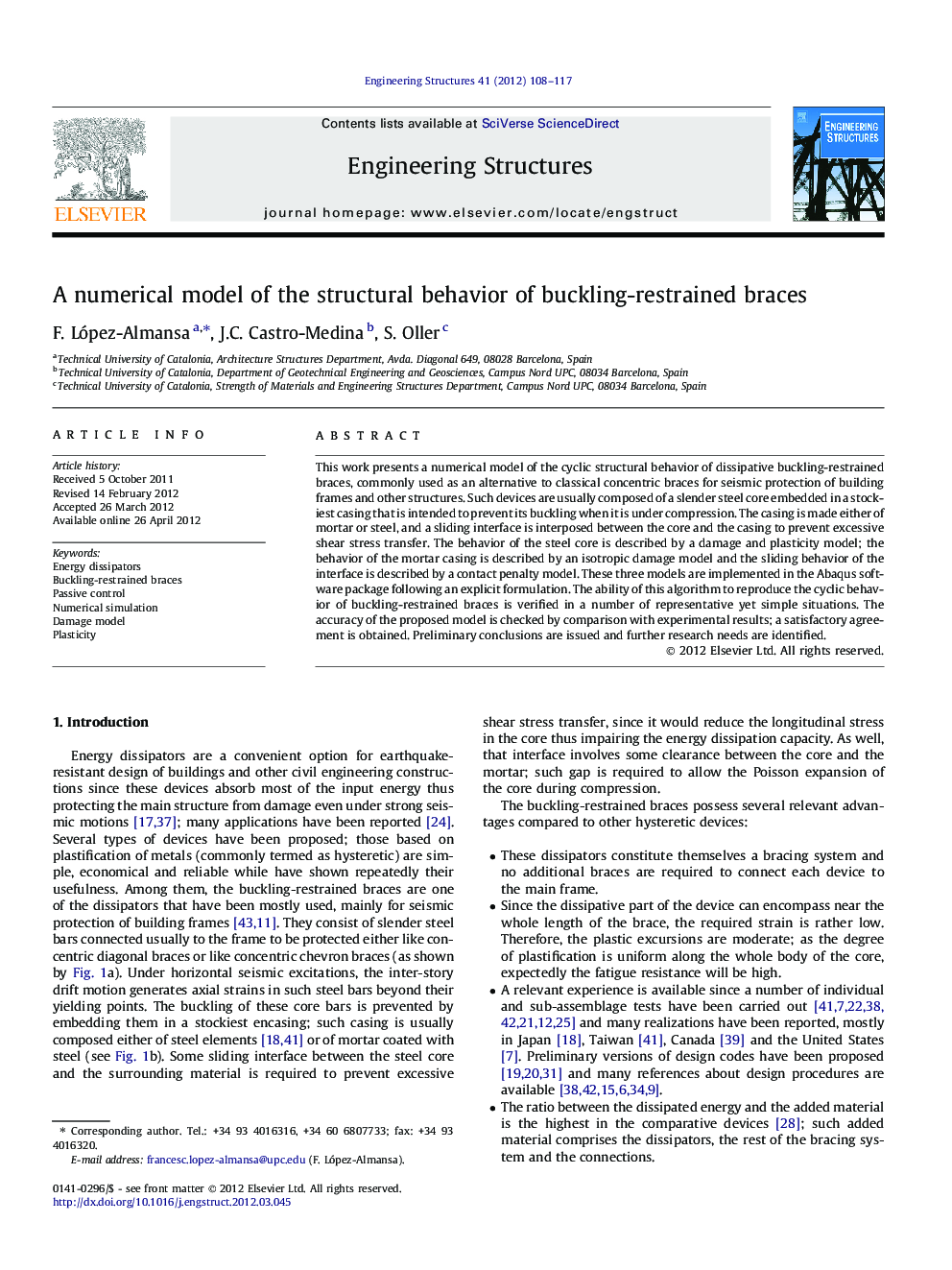| Article ID | Journal | Published Year | Pages | File Type |
|---|---|---|---|---|
| 267400 | Engineering Structures | 2012 | 10 Pages |
This work presents a numerical model of the cyclic structural behavior of dissipative buckling-restrained braces, commonly used as an alternative to classical concentric braces for seismic protection of building frames and other structures. Such devices are usually composed of a slender steel core embedded in a stockiest casing that is intended to prevent its buckling when it is under compression. The casing is made either of mortar or steel, and a sliding interface is interposed between the core and the casing to prevent excessive shear stress transfer. The behavior of the steel core is described by a damage and plasticity model; the behavior of the mortar casing is described by an isotropic damage model and the sliding behavior of the interface is described by a contact penalty model. These three models are implemented in the Abaqus software package following an explicit formulation. The ability of this algorithm to reproduce the cyclic behavior of buckling-restrained braces is verified in a number of representative yet simple situations. The accuracy of the proposed model is checked by comparison with experimental results; a satisfactory agreement is obtained. Preliminary conclusions are issued and further research needs are identified.
► Buckling-restrained braces have been widely used for seismic protection of buildings. ► Their structural behavior is highly complex and none accurate and reliable numerical model has been reported. ► This lack prevents the development of innovative and daring solutions. ► This paper proposes such a numerical model. ► The accuracy of the model is checked by comparison with available experimental results.
